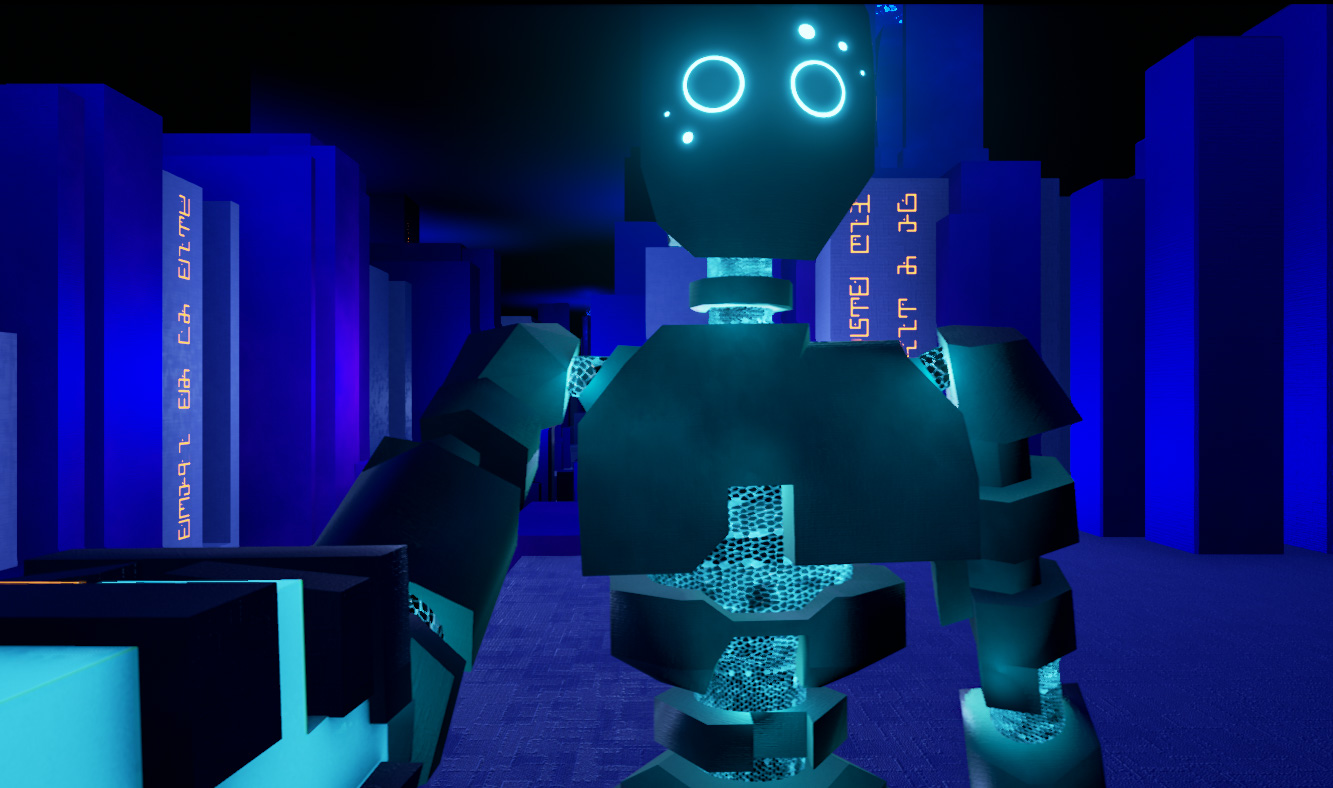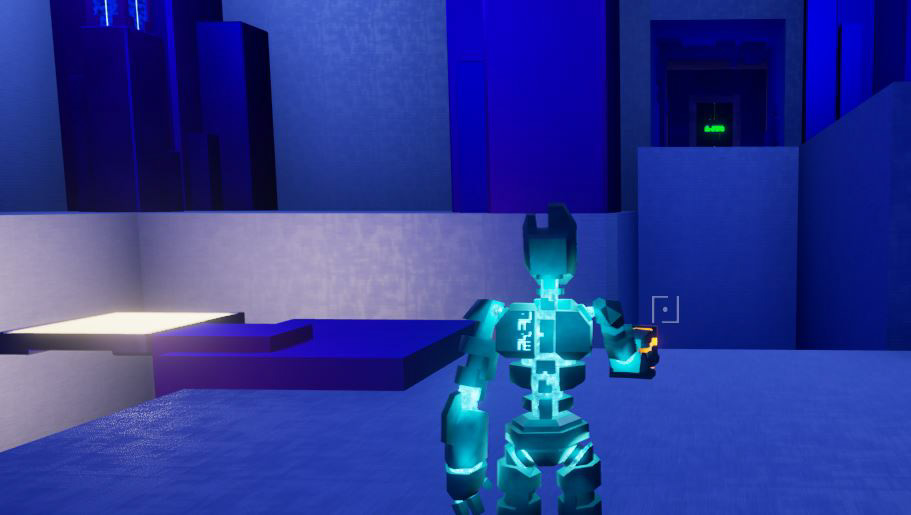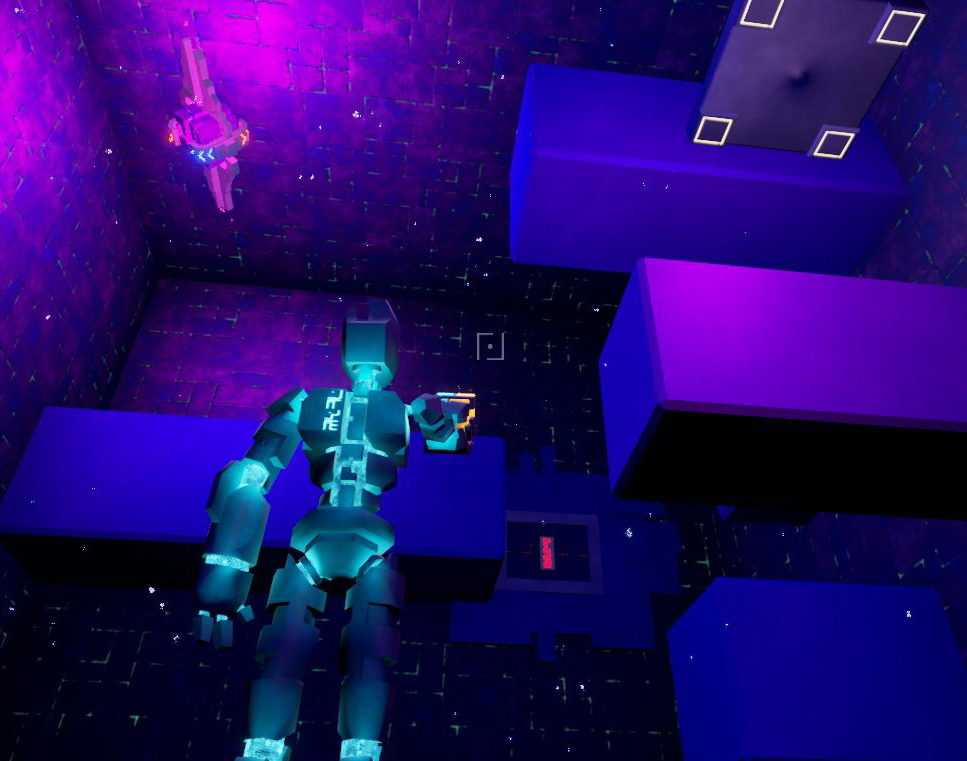Anomaly 1729 is a puzzle platformer with roots in the Portal series and The Talos Principle. You play a character discovering its own story; you wear a tool on your arm remarkably like that in Portal; and, much like The Talos Principle, you are faced with visual puzzles that require patience, lateral thinking, and tenacity.
There is no time limit, no death, no save screens. If this sounds like a fun challenge, read on!
This is the moment you gain awareness and freedom.
What a wonderful world
Anomaly 1729 creates a sense of wonder and awe from the opening sequence. You sweep through blue-tinted canyons devoid of any life or movement; the music is technological in origin, and manages to sound both hopeful and timid at the same time. There’s no voiceover to tell you where you are going or what you are seeing — even the writing on the pillars you glide past have no meaning for you.
You see your character’s face for a few brief moments, and then your point of view is locked irrevocably at some point a meter or so behind your back. Your arm holds a tool that fires red and blue projectiles, but their purpose is unclear. Even your destination is a mystery.
You are free.
I See The Light
Since you know that this game is a puzzle platformer (you bought it on Steam, right?), you start to explore your surroundings and find a door. The first puzzle room lies beyond it.
A door, a platform, and a world await!
The way your character jumps and lands on objects feels realistic and solid. You never feel like you are going to skid off of that shiny platform, but neither do you have super parkour skills to get to the top of that balcony.
In the first room, you will learn the basic physics behind this game, which involve shooting certain objects to manipulate each room. Sometimes the object will make the whole room execute a quarter roll; other times, objects in the environment will move and it’s up to you to notice what has changed.
If you pause long enough, the developers have added helpful tutorial tips that give you bare-bones advice, and soon you are firing blue and red projectiles that make rooms rotate and platforms leap into action.
Playing the Game in your Mind
Like many puzzle games, there are time where you may be stumped and will find that your mind continues to bang away at the problem until you have an ‘aha’ moment. I found holding a solid object in my hand, such as a cardboard box, and rotating it in various directions, helped me to visualize what I wanted to do in the game world.
Any game that can occupy your mind when you aren’t even playing it is worthy of praise, and I want to acknowledge the effort of Indie developers Anvil Drop.
Lost in the Deep Blue Unknown
There’s one feature that makes this game a real challenge of patience and time:
There is no way to know where you are, so there is no way to get help. Rooms are not easily identifiable; they have no number, no theme, no grid coordinates. For this reason, you will find no online walkthroughs or help because no one has a way to explain where they are currently stuck.
This takes away a lot of the social networking and YouTube activity that other puzzle games enjoy. It also prevents players from getting online help, reading a game guide, or simply watching a video of someone solving the puzzle for them.
I have played this game for 1.5 hours. I have spent 30 minutes of that in one room, spinning around and jumping on things and falling to the floor. I think about that room walking my dog, I see the spinner in the traffic lights when driving to work, and I have turned off the music because it seems to be mocking me. Talk about a game sticking with you…
Conclusion
Anomaly 1729 is a surreal puzzle platformer with a lot of atmosphere, but its difficulty and bluey sameness can be maddening. The immovable viewpoint is wearing thin after a few hours, but if you like a challenge and know what lies ahead, this game might be right for you.









Published: Jun 8, 2016 04:51 pm